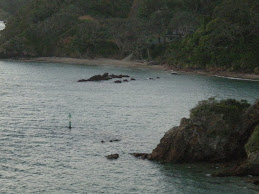Another case of melamine contamination or just a tiny bit of scare? Princess and I were having dinner with some friends when we were discussing this news – Tatua’s product has been fouund to contain traces of melamine, and Cadbury has withdrawn 11 Chinese-made products, including chocolate eclairs sold in Australia, after tests found melamine in them.
Waikato's Tatua Co-operative Dairy Company has voluntarily suspended exports of dairy protein lactoferrin after tiny amounts of melamine were detected in its products in China.
China this month stopped production at Fonterra joint venture Sanlu after its baby formula containing melamine caused the deaths of four infants and made tens of thousands of babies sick. (Source stuff.co.nz)
Lactoferrin
My google search tells me that South Korea has also found melamine in its lactoferrin. It remains to seen which other countries will come up with the same findings. What is at stake is the export of a high value protein that is extracted out of milk.
Tatua didn’t know of the contamination until one of its agents told it so. The CEO of the company Paul McGilvary said the company called in the New Zealand Food Safety Authority after a customer highlighted to Tatua of the discovery of a trace of melamine.
In boffin-speak, tests results showed contamination of less than four parts per million. The authority will take action at 2.5 parts per million but five parts per million is generally considered safe. According to an NZPA report, NZ food watchdog the NZ Food Safety Authority has no legal maximum residue level (MRL) for melamine in milk, even though in June it published MRLs for melamine at 0.3mg/kg in sheepmeats, and 0.15mg/kg in poultry and eggs. The funny thing is regulatory authorities are only coming to terms with how to set melamine limits for dairy products, including 2.5 parts per million in Hong Kong and McGilvary understood the US was using 10 parts and China was thinking about five parts.
Tatua now has to repair the international damage done to its lactoferrin. What it has to do is to retrace how melamine got into its product. It says its milk is unadulterated, and its process impeccable. Could it be the packaging? The insecticides use? Or the fetilizers? It will take at least a month to come out with some answers. What is also at stake is Tatua’s proprietary manufacturing process, which it sold to another dairy company Westland – also a producer of lactoferrin.
A satellite lactoferrin plant at Westland Milk Products in Hokitika has also found as having low levels of melamine contamination, and food safety officials said they were looking at the possibility that the contamination is being introduced by the manufacturing process (Source: Food and Beverage News)
Lactoferrin, which sells for about $500,000 per tonne, is used in baby formulas and dairy-based drinks. Fonterra also makes lactoferrin.
Mr McGilvary said Tatua, which has 112 suppliers, exports about 30 tonnes of lactoferrin per year, and he could not say when the suspension would end.
Series of unfortunate events
This is unfortunate for a dairy company hailed as one of the most successful competitors to Fonterra – Tatua has just announced record payout for milk solids for its farmers.
What is an acceptable level of melamine for the human body? Who knows! This phenomena is only just beginning to unravel. Now we know how fragile the human existence is. In the past, the hunter gatherer learnt of what to kill/what to eat and what to forage in the forest. Now, we have the benefit of science to tell us what is safe and what is not safe. Let’s hope the boffins are right.
Mom used to tell me not to microwave plastics. I used to ignore her. Now I have stopped using plastics to microwave my food – I am getting more paranoid by the day. So, better safe than sorry. I am microwaving only in ceramics/corning/glass.
Footnote: he NZ Food Safety Authority had on Sept 30th released a statement to say this:
With regards to the industry reports of the presence of incidental trace levels of melamine in lactoferrin, NZFSA confirms that one result from four tests of lactoferrin has returned a result at around the limit of detection of 1 ppm. This does not constitute a health hazard, particularly as lactoferrin is used as a minor ingredient and is not consumed as a food on its own.
“It is NZFSA’s belief that this trace level may have arisen out of this specific unique process and is continuing to work with the industry concerned to better understand the biochemistry as to why this is happening.
“From all 116 tests there is clearly no indication of any deliberate adulteration whatsoever and based on results to date we are confident that all New Zealand dairy products are fully compliant.”
On New Year's resolutions
1 day ago





No comments:
Post a Comment
Hi, I welcome your say on the matter!